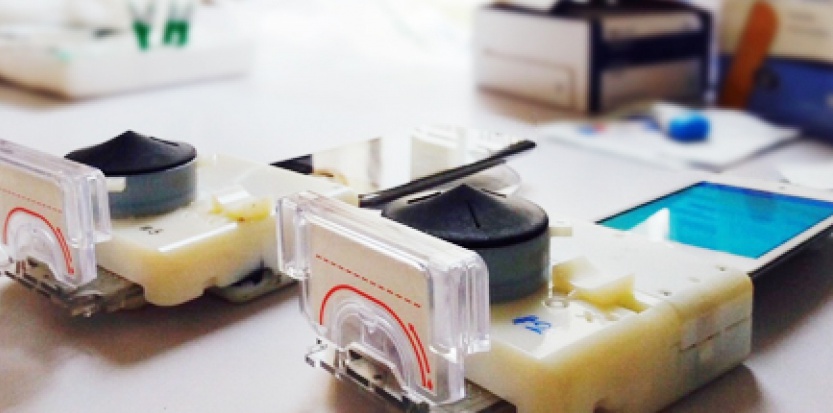American engineers have developed a small device that plugs into a simple smartphone to detect the presence of these two sexually transmitted diseases in blood.
A full laboratory analysis may be performed by a smartphone accessory
This little accessory that can also be connected to a computer, has recently been tested by health workers in Rwanda. They analyzed a drop of blood from the finger of 96 women recruited as part of a program to prevent the transmission of AIDS from mother to child. Results showed an accuracy very close to that obtained with laboratory analysis. “Our work shows that a complete laboratory analysis can be performed by a smartphone accessory”, as stated by Samuel Sia, professor of biomedical engineering at Columbia University, New York, lead author of the invention. “Combining the technology of microfluidics with recent advances in consumer electronics can make the laboratory diagnostics accessible to almost all people with access to smartphones” , he said adding that “it can transform the way health services are delivered all over the world” .
Video demo of the device:
[youtube]https://www.youtube.com/watch?v=TC9XNqSgj4w[/youtube]
This accessory is small and light enough to held in one hand and can be manufactured at a factory cost of $ 34, well below the 18,450 dollars of equivalent laboratory equipment required. However, the marketing of this device may take some time. The machine consumes very little electricity, which is essential in certain countries where power distribution is random. Very solid, it requires little training to use and requires no maintenance, as claimed by these engineers.
